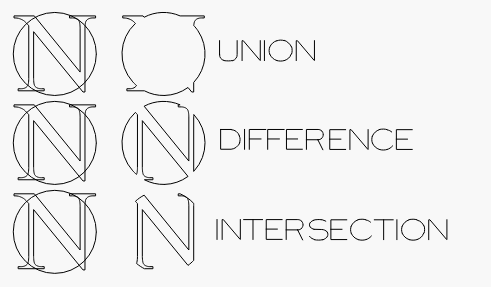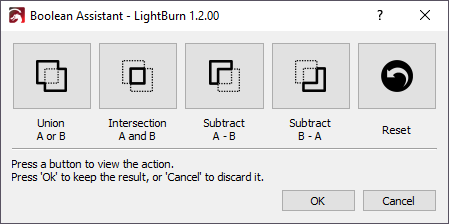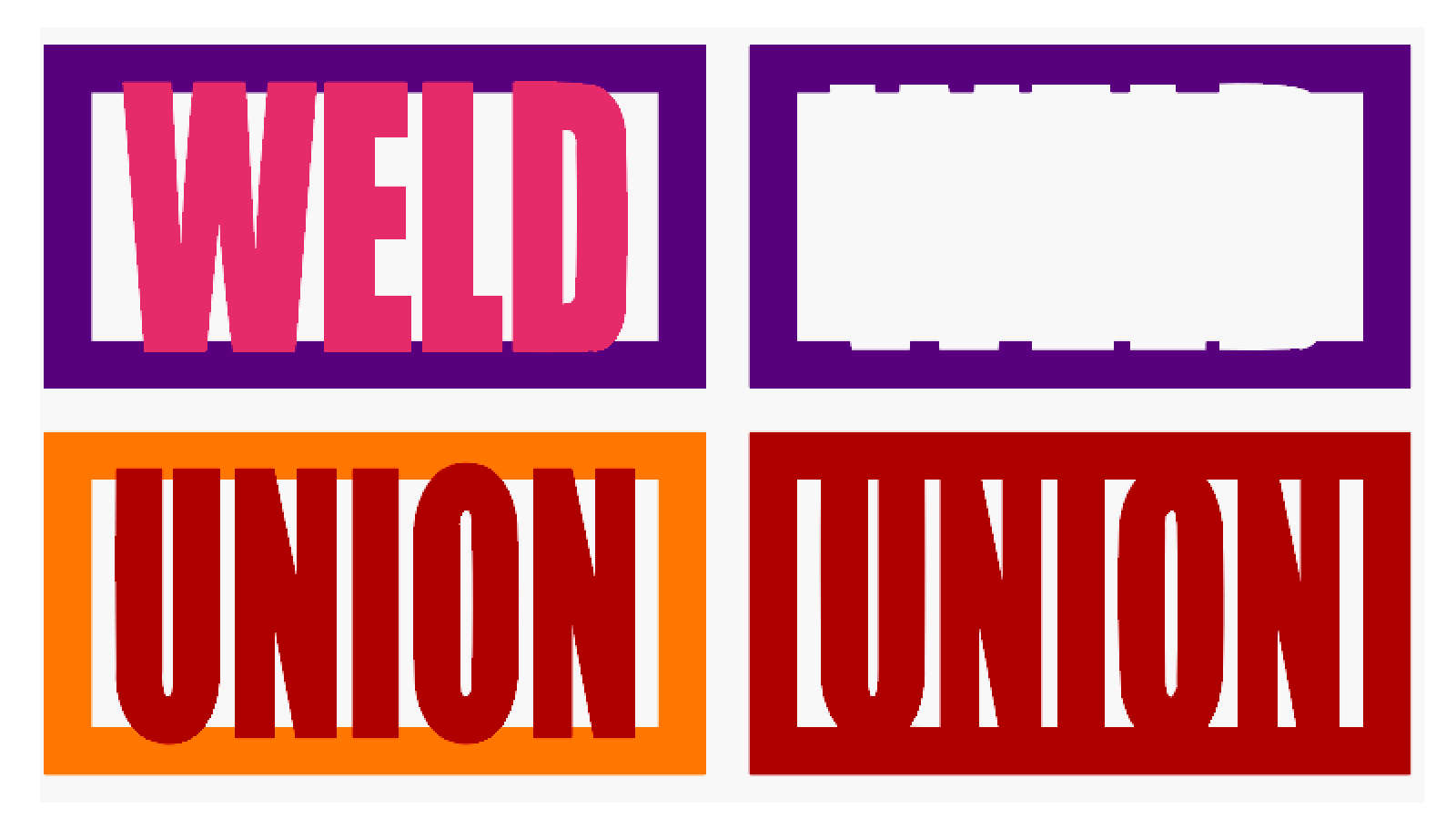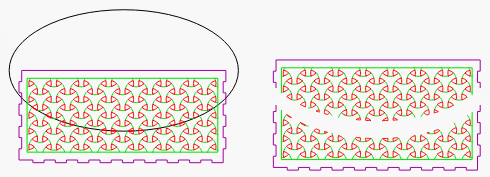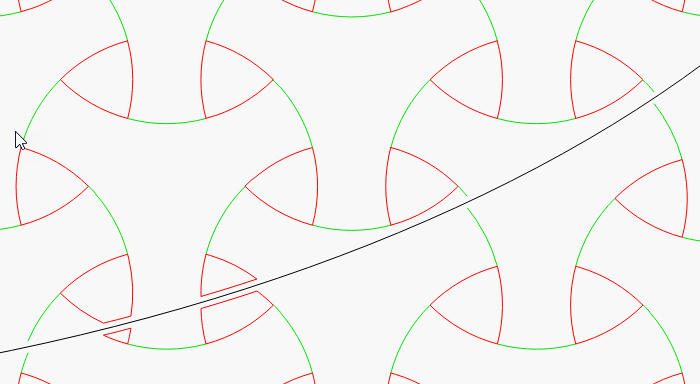Combining Shapes: Weld, Cut Shapes, & Boolean Modifiers
Each of these tools allows you to combine primitive shapes to quickly build up more complex shapes. In other software, similar tools are often called things like Pathfinder or Combining Shapes.
Related Videos¶
A brief overview of each tool:
A more detailed walkthrough:
Boolean Modifiers¶
The boolean tools are used to combine shapes into more complex shapes. The three different Boolean operations are shown here:
- Union keeps the area covered by either shape - it merges them.
- Difference is the 2nd shape removed from the first.
- Intersection keeps the area covered by both shapes.
Boolean tools require exactly two shapes or two groups of shapes. Weld can be used on any number of shapes, and can often be used as an alternative to repeated Boolean Union operations. Otherwise, you'll need to perform multiple Boolean operations to combine more than two shapes.
All shapes used with the Boolean tools must be closed shapes, meaning continuous loops whose starting and ending points are the same.
Boolean Assistant¶
Hotkey = Ctrl/⌘ + B
Because it can be hard to remember which operation (or which order) is going to do the thing you want, we've added a Boolean Helper that will let you preview each of the Boolean operations before deciding on one.
Click any of the first 4 buttons to see what that operation will look like, or click the 'Reset' button to see the original shapes. If your design is not complex, hovering over the buttons will also work. When you see the result you want, click the 'Ok' button to keep it, or click 'Cancel' to revert.
 Boolean Union¶
Boolean Union¶
Boolean Union is similar to weld, but works with 2 selected objects only. However these selected objects can actually be grouped items, not just a single vector shape.
 Boolean Subtract¶
Boolean Subtract¶
Hotkey = Alt + -
Boolean Subtract (also called Boolean Difference) will remove the area that the second selected shape overlaps the first shape by. The order in which you select shapes will determine the outcome. This tool also works with grouped items. If you end up subtracting the items in the wrong order, Undo, then perform the operation again - The undo switches the order of the items, so a simple Undo and click-again of of the Subtract button is a quick fix.
 Boolean Intersection¶
Boolean Intersection¶
Hotkey = Alt + *
Boolean Intersection creates a new shape from the overlapping areas of two selected shapes.
Weld¶
Weld is similar to Boolean Union, but it can join more than two shapes/groups.
Clicking on the Weld icon will join all the selected shapes into a single entity that is the outline of all the selected shapes. Note that Weld requires closed shapes, but will accept any number of inputs.
Weld Vs Union¶
If you weld something and the middle content disappears (e.g. if you are trying to Weld text inside a ring, and the text disappears), use Boolean Union after making two groups: one of border and one of the contents (if the contents contains a single object, that’s fine, no need to group the contents). You can see this in action in the videos at the top of this page.
Cut Shapes¶
The Cut Shapes tool in LightBurn allows you to cut vector shapes in a project using a closed shape as the cutting tool. Cut Shapes can be used to cut a project into smaller sections that can be run separately, allowing you to create projects that are larger than will fit within the area of your laser. Large scale designs make heavy use of this feature. (1)
- Cutting a single project larger than your laser: https://www.youtube.com/watch?v=n__saOKVupA
To use the Cut Shapes tool, select the shapes you wish to cut, then add the cutting tool shape to your selection (the last shape selected is the cutting tool). In the Tools menu, select 'Cut Shapes' and the software will perform the cut.
An example is shown below - the black oval is used as the cutting shape, and the result is shown on the right, separated so you can more easily see the cut line.
In this zoomed in view, near the lower-left you can see that when the red shapes were cut, the software added a new line, closing those shapes, but did not add anything when the green lines were cut. This is because the red layer is set to 'Fill', and in order for the resulting shapes to fill correctly, they need to be closed. The green layer is set to 'Line' mode, so those shapes are not closed when cut.
Key points to remember:
- The last shape you select is used as the cutting tool
- The shape used as the cutter must be a single closed shape
- The cutting tool shape is discarded - if you need it again, make a duplicate of it (Ctrl+D)
- Shapes that are cut will be closed if they are set to 'Fill', or left open if they are set to 'Line'
